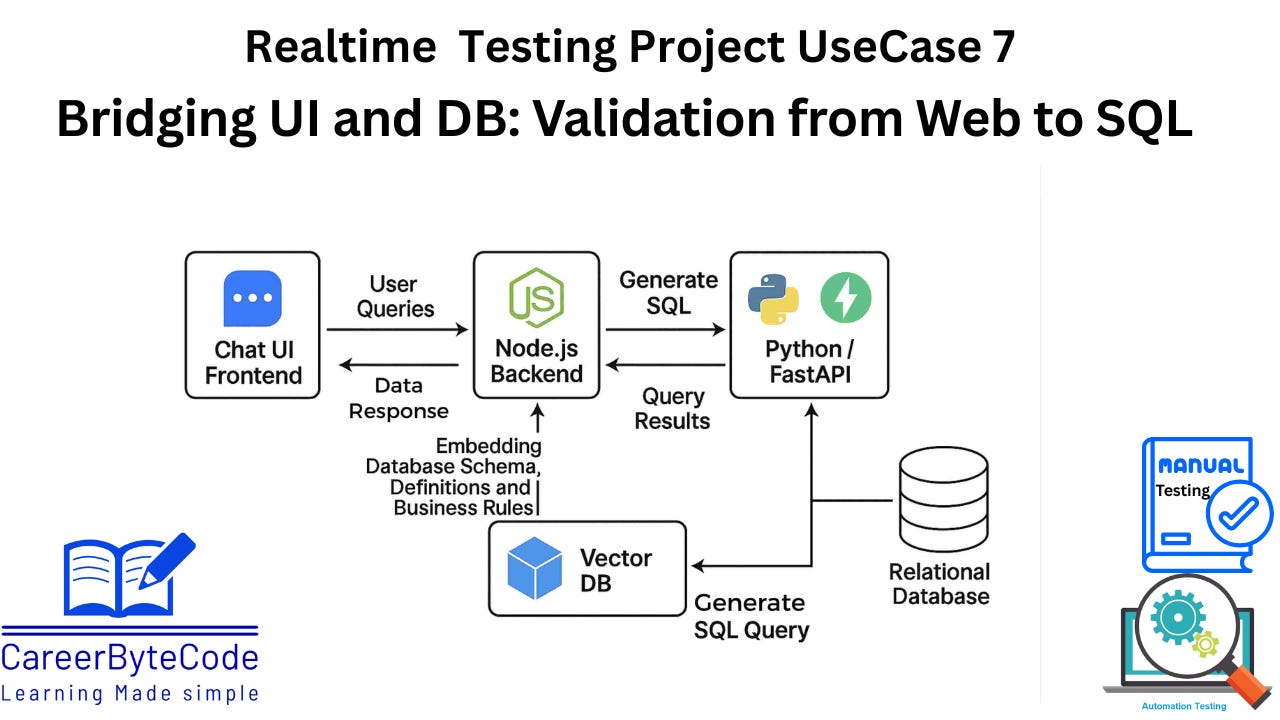Automated End-to-End Backend Data Validation After UI Form Submission Using Selenium, Oracle DB, and TestNG
Is Your Data Safe? Validate UI Submissions in Oracle DB Automatically
1. 🧩 Problem Statement
In web applications, especially in enterprise-grade or e-commerce systems, it's common for users to fill out forms—whether it’s for registration, checkout, or feedback. However, several clients have complained that after submitting these forms, the backend does not reflect the correct or updated data. This disconnect between UI and database poses serious integrity issues, leading to loss of user trust and regulatory non-compliance.
The challenge here is to validate whether the frontend (UI) form submission truly results in accurate data being stored in the backend SQL database (Oracle or SQL Server). This process must be automated to save time, ensure consistency, and eliminate human error.
Scenario:
After a form is submitted via UI, backend SQL tables should reflect the updated info. Client complains of data mismatch.
Approach:
Automate the form submission using Selenium.
Capture and store the form values from the UI.
Use JDBC or SQL scripts to connect to SQL Server/Oracle DB and query the expected records.
Match UI data with backend data for verification.
Use TestNG or JUnit for structured reporting of validations.
Tools or Services to be Used:
Selenium WebDriver, SQL Server/Oracle DB, TestNG/JUnit
2. ✅ Why We Need This Use Case
Data Integrity Assurance: Ensures that data captured via frontend forms is accurately persisted in the backend DB.
Reduce Manual Verification: Saves time and effort by automating UI + DB level validations.
Early Defect Detection: Identify synchronization or mapping issues before they go to production.
Client Confidence: Validates client concerns about data mismatches, improving trust.
Test Automation ROI: Combines UI automation (Selenium) with backend validation (JDBC/SQL), showcasing real automation value.
This use case represents a critical real-world QA scenario every full-stack or automation tester should master.
3. ⏱️ When We Need This Use Case
While testing form-based workflows (registration, login, surveys, checkout forms).
During SIT (System Integration Testing) or UAT phases where backend validation is key.
When reported client issues suggest inconsistent data post-form submission.
When working on legacy applications being migrated to new databases or frontends.
For regression testing when DB logic or API connectors are updated.






